dormakaba – Continuously networked production and logistics processes
Digital manufacturing with SAP standard software
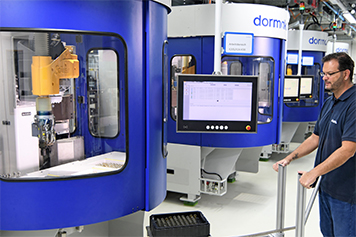
For dormakaba, a batch size of one is not a trend, but has long been a reality. By introducing the SAP Manufacturing Execution (SAP ME) and SAP Extended Warehouse Management (SAP EWM) standard software at its Wetzikon site, the provider of access and security solutions has taken an important step towards becoming a connected company. The ambitious project was implemented together with IGZ, the SAP project centre for production and logistics.
Today's dormakaba Holding AG, headquartered in Rümlang, Switzerland, was formed in 2015 from the merger of the Dorma and Kaba brands. This step led the group to become one of the top three companies in the global market for access and security solutions. They are used in hotels, shops, sports facilities, airports, hospitals and government and administrative buildings, as well as in industry and residential buildings. dormakaba offers products, solutions and services from a single source and is committed to sustainable development along the entire value chain. More than 16,000 employees and global partners ensure a strong presence in more than 130 countries around the world. The company, which is listed on the SIX Swiss Exchange, generated sales of around CHF 2.8 billion in the 2018/19 financial year.
Historically grown IT landscapes
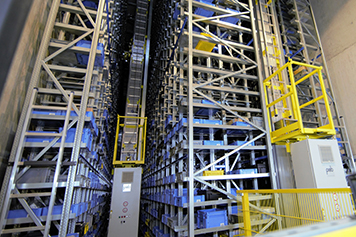
Around 95 per cent of the products are custom-built at the Wetzikon plant; there is virtually no storage of finished goods. More than 1,000 customer orders have to be processed every day. This results in over 3,000 production orders in the same period. These numbers alone imply enormous challenges. In addition, there is the customised coding (permutation) and the number of variants associated with "batch size 1", which amounts to n x 100,000. Currently, there are over 50 production machines and more than 100 manual workstations where keys and lock cylinders are manufactured and then assembled. The company also produces digitised solutions for locking systems at the site.
Until the switchover to the new standard software for production and material flow control, dormakaba used an in-house MES system – with varying degrees of sophistication in the different plants – as well as a special warehouse management solution in the area of logistics. Although the required performance values were achieved, new market and product requirements could only be met with time-consuming further developments. In this context, dependence on internal specialist know-how also proved to be unsustainable in the long term.
Digitisation strategy points the way
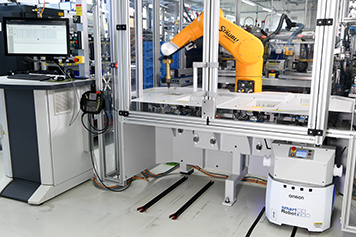
"This architecture no longer fitted into the overall strategy," explains Christoph Kunz, head of the Wetzikon plant since 2012. "Our digitisation initiatives see us focusing on an end-to-end integrated system infrastructure that can be used as the basis for connected services." The aim is to network both products with each other and the company with its customers in the sense of Industry 4.0. For production, the digitisation approach means horizontal and vertical integration, standardisation and replacement of the previous system infrastructure. Against this backdrop, it was only logical to replace the previous, paper-based production, which required enormous sorting and handling effort.
In the run-up to implementation, the project managers at dormakaba examined three options: use and adaptation of the existing MES solution, design of a new MES under its own direction or the introduction of new SAP-ME standard software. "Developing our own system would definitely have taken too long; at a guess, it would certainly have taken around 30 person-years," the plant manager notes with a wink. And, thus, the die was cast. At the same time, the operational requirements were defined in line with the new SAP IT strategy: integration with existing SAP ERP as a first step with simultaneous replacement of the outdated MES and logistics systems and preparation for the integration of a new SAP ERP. In this context, it was also important that the security specialist could participate in SAP’s ongoing cyclical development of the standard software over the long term.
Analysis instead of toil
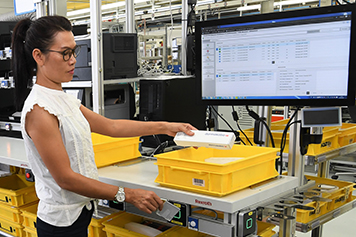
As part of a preliminary analysis, the planned SAP MES/EWM concept was initially reviewed together with the SAP project centre IGZ. The workshops showed that more than 75 per cent of the often very specific requirements could be mapped in the standard SAP Manufacturing Execution (SAP ME); this even rose to over 80 per cent in the case of SAP Extended Warehouse Management (SAP EWM). This created significant cost advantages. In order to ensure a controlled migration to the new strategic IT architecture, dormakaba opted for the implementation of a phase model during running operations instead of a "big bang", which would have entailed far greater implementation risk. In addition, the entire production would have had to be emptied out.
"At this point, the decision was also made to continue on the chosen path with IGZ," says Christoph Kunz. "During the preliminary analysis, the special SAP-ME and SAP-EWM competence became clear: IGZ offers everything from a single source and the reference visits also won us over." Also decisive were the sophisticated IGZ emulation tools for integrated and fully automated emulation of the production machines/processes and logistics. This improved preparation for plant tests and eliminated uncertainties, both in the current project phase and in future optimisations and extensions.
Synchronised system communication
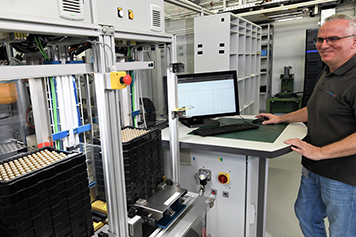
In the first step, the IGZ engineers implemented the SAP ME module in the production areas, without direct connection to the existing warehouse system. 20 production machines were integrated here to begin with. This was achieved using state-of-the-art web service technology and SAP Plant Connectivity (SAP PCo), making it possible to reduce the response time for data exchange between the systems and SAP ME to less than 200 milliseconds. At the same time, it was already possible to implement paperless production in the area of keys and mechatronics. In the following phase, the production control system was rolled out to all other areas and the previous warehouse management system was replaced with SAP EWM, thus achieving the goal of direct and close online integration between SAP ME and SAP EWM. Printed receipts are meanwhile a thing of the past throughout the manufacturing sector.
Now the order process starts with the formation of the permutation and the creation of a segmentation. This is followed by "bracketing" according to specific criteria in SAP ERP, as well as renewed grouping across orders in SAP MES, via which batches are formed. These batches can be automatically assigned to a workstation and linked to carriers, which are also used for product identification. A tray thus contains several production orders consisting of very small quantities. This has the decisive advantage of significantly reducing the number of handling units in circulation. After completion of the first processing operation or prefabrication, SAP ME sends a corresponding message to SAP EWM, and the containers are automatically buffered as WIP units in one of the two automatic small parts warehouses (ASPW) integrated directly into the production environment. In the next step, the system checks which workstation is free or will soon become free. In addition, it queries the qualification of the respective operating personnel. This ensures that demanding assembly orders are reported directly to those who posses the necessary expertise. The requested handling unit(s) are removed from storage in parallel.
SAP ME acts as the "master system”
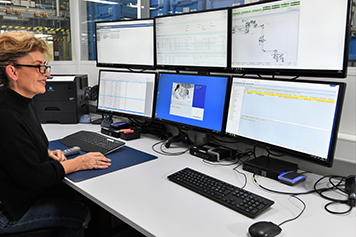
The fully automated small parts warehouses, which are directly integrated into the process, offer a total of 12,000 storage spaces in two aisles each. In addition, a so-called “merging warehouse” (MW) with 3,000 storage spaces was integrated into the conveyor system. This is a special automation system in which the keys from prefabrication can be buffered until the matching cylinders/inserts arrive. Containers with associated cylinders/inserts are transported to the MW with SAP-EWM support and the associated keys are added fully automatically. From there, it goes on to assembly. By migrating to SAP standard software, it was also possible to optimise the "reject and replace process" (RRP). This is a subsequent step necessitated by reworking, in which the renewed production of
order-specific components is triggered. These are subject to a special control of the SAP EWM material flow directly at the RRP station. However, the only front end for the operating employees is SAP ME; they have no contact with SAP EWM. All material movements in the background can be triggered directly via SAP ME as the "master system".
Lean production with batch size 1
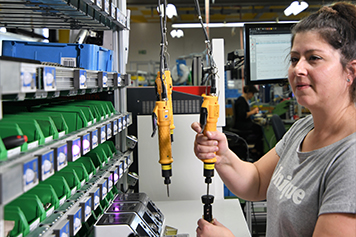
Since the beginning of 2019, IGZ has been rolling out SAP ME across the entire dormakaba plant in Wetzikon. It also introduced SAP EWM at the same time. This results in paperless processes and automatic detailed order planning. The system-supported elimination of time-consuming sorting and handling operations has provided major gains in efficiency; there is also continuous transparency with regard to every single part and every process step. In addition, employees benefit from application-specific user interfaces that can be operated intuitively. Nevertheless, Christian Kunz stresses that lessons also had to be learned. Due to the complexity of such a project, it is important not to rely on a few experts within the company, but to involve other employees at an early stage in order to relieve the burden on key individuals. The effort required for test management should also not be underestimated. Thanks to the carefully conducted functional and mass tests, the previous production capacity was reached again just one week after the switchover.
"SAP ME/EWM is an important part of Industry 4.0 for dormakaba and enables seamless end-to-end integration," says the Plant Manager, summing up. "We have thus taken a decisive step forward on the path to becoming a connected company." The platform acts as a link between the shop floor and the ERP, provides information in real time and controls paperless “batch size 1” production entirely automatically. Transparency also ensures that quicker and better decisions regarding manual intervention can be made, if necessary. Thanks to the new flexible concept of connecting machines to SAP ME, the company has already been able to connect new systems to SAP ME entirely by itself. In addition to the rollout in further branches, additional optimisations are currently on the agenda. These include, for example, the introduction of a driverless transport system (DTS) with direct control from SAP ME. dormakaba sees itself as being equipped for future requirements.
Back to overview

